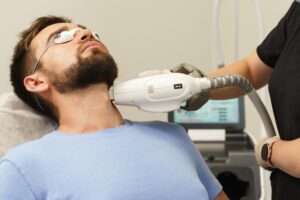
Erectile dysfunction (ED) is a common condition that affects many men at different stages of their lives. It is characterized by the inability to achieve or maintain an erection sufficient for satisfactory sexual performance. While occasional difficulty with erections is not unusual, persistent issues can be a sign of ED, which may necessitate medical attention. Understanding the normal age range for erectile dysfunction can help in distinguishing between what might be a typical part of aging and what might require further investigation and treatment. If you looking for ED treatment then you can also take Cheap Levitra Online to treat ED.
The Physiology of Erections
To comprehend the normal age range for erectile dysfunction, it is essential to understand the basic physiology behind erections. An erection is a complex process involving the nervous system, blood vessels, muscles, and hormones. When sexually stimulated, signals from the brain travel to the nerves in the penis, causing the muscles to relax and allowing blood to flow into the spongy tissues. This engorgement results in an erection. Factors such as emotional state, physical health, and certain medications can impact this process.
Age and Erectile Dysfunction
Erectile dysfunction can occur at any age, but its prevalence increases with advancing years. While it is not exclusively a condition of older men, age is a significant risk factor. Various studies have provided insights into the age-related prevalence of ED.
- Young Adults (20s and 30s): Erectile dysfunction is less common in this age group. When it does occur, it is often related to psychological factors such as stress, anxiety, or depression. Lifestyle factors like smoking, excessive alcohol consumption, and illicit drug use can also contribute. Additionally, underlying health conditions such as diabetes or hormonal imbalances might play a role.
- Middle Age (40s and 50s): The incidence of erectile dysfunction begins to rise significantly in men in their 40s and 50s. This increase is often linked to physiological changes, including reduced testosterone levels and the onset of health conditions such as hypertension, diabetes, and cardiovascular diseases. Lifestyle choices and psychological factors continue to be relevant.
- Older Adults (60s and Beyond): Erectile dysfunction becomes more prevalent in men over 60. Age-related health issues, such as atherosclerosis (hardening of the arteries), which can reduce blood flow to the penis, are common contributors. Additionally, conditions like prostate problems and their treatments can affect erectile function. The decline in physical health and increased medication use are also significant factors.
Statistics on Age and Erectile Dysfunction
Several studies have quantified the relationship between age and erectile dysfunction. For instance, the Massachusetts Male Aging Study (MMAS) found that approximately 40% of men experience some degree of ED by the age of 40, and this prevalence increases about 10% per decade thereafter. By age 70, nearly 70% of men are affected by ED. Another study published in the “Journal of Sexual Medicine” reported that around 26% of men under 40 experience ED, primarily due to lifestyle factors and psychological issues, while the prevalence increases dramatically with age.
Factors Contributing to Age-Related ED
- Health Conditions: Chronic diseases such as diabetes, heart disease, high blood pressure, and obesity are more common with advancing age and are major risk factors for erectile dysfunction. These conditions can damage blood vessels and nerves essential for erections.
- Medications: Older men are more likely to be on medications for various health issues. Some of these drugs, including those for high blood pressure, depression, and prostate conditions, can interfere with erectile function.
- Hormonal Changes: Testosterone levels naturally decline with age. While this is a normal part of aging, low testosterone can affect libido and erectile function.
- Lifestyle Factors: Smoking, excessive alcohol consumption, poor diet, and lack of exercise are lifestyle choices that can exacerbate erectile dysfunction. Older men who maintain healthy habits may experience fewer issues compared to those who do not.
- Psychological Factors: Depression, anxiety, and stress can affect sexual performance at any age. In older adults, concerns about aging, health, and sexual performance can contribute to ED.
Managing Erectile Dysfunction Across Ages
Understanding that erectile dysfunction is a common issue can help reduce the stigma and encourage men to seek help. Management and treatment options vary based on the underlying cause and the individual’s health status.
- Lifestyle Modifications: Regardless of age, improving diet, increasing physical activity, quitting smoking, and reducing alcohol intake can positively impact erectile function. Stress reduction techniques such as meditation and counseling can also be beneficial.
- Medical Treatment: Medications like phosphodiesterase type 5 (PDE5) inhibitors (e.g., Viagra, Cialis) are commonly prescribed to enhance erectile function. Hormone replacement therapy might be an option for men with significantly low testosterone levels.
- Psychological Counseling: Therapy can help address psychological factors contributing to ED, such as anxiety, depression, or relationship issues. Cognitive-behavioral therapy (CBT) and sex therapy are effective approaches.
- Medical Devices: Vacuum erection devices, penile implants, and penile injections are alternative treatments for men who do not respond to oral medications or lifestyle changes.
- Regular Health Check-Ups: Monitoring and managing chronic health conditions can prevent or reduce the severity of ED. Regular check-ups with a healthcare provider can help in early detection and management of conditions that affect erectile function.
Conclusion
Erectile dysfunction is a condition that can affect men of all ages, but its prevalence increases with age. While it is normal for the likelihood of ED to rise as men get older, it is not an inevitable part of aging. Understanding the factors that contribute to age-related ED and adopting a proactive approach to health and wellness can help men maintain sexual function throughout their lives. Open communication with healthcare providers and seeking appropriate treatment can significantly improve quality of life and sexual health.






